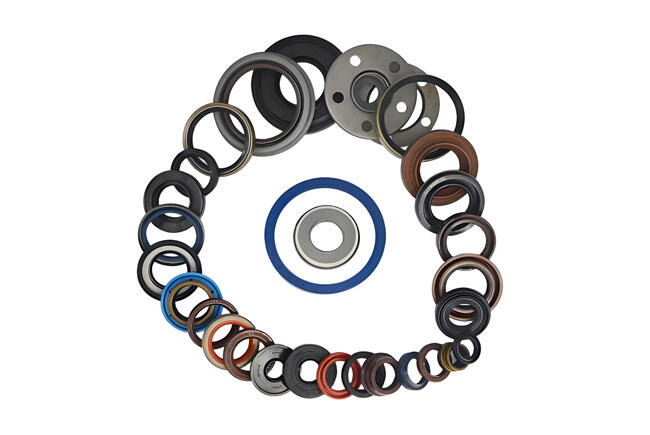Industrial oil seals can be classified according to different dimensions such as structure, function, and application scenarios. The specific classifications are as follows:
1. Classification by structural type
Skeleton oil seals
Exposed skeleton oil seals: The metal skeleton is exposed, suitable for environments with less dust.
Inner skeleton oil seals: The metal skeleton is completely wrapped in rubber, such as TC-type oil seals, which have self-tightening springs and double-lip structures, suitable for high-speed, high-temperature automotive engines and hydraulic systems.
Skeletonless oil seals: No metal support, low cost, used for light machinery.
Composite oil seals
Combined with multiple materials or structural designs, used for special sealing needs.
2. Classification by the number of lips
Single lip oil seals
Only one sealing lip, suitable for low-pressure and low-speed scenarios (such as household appliances, non-critical automotive parts).
For example, TB-type oil seals use a reinforced single-lip design with low pressure resistance.
Double lip oil seal
Main sealing lip + auxiliary dustproof lip, such as TC and TG oil seals, suitable for high-pressure and dusty engineering machinery and hydraulic systems.
Some models can withstand linear speeds up to 15m/s.
3. Classification by spring configuration
Spring-type oil seal
Belt-shaped or finger-shaped springs enhance the sealing pressure, such as TC and TG types, suitable for high-speed or high-pressure environments.
Springless oil seal
Relying on material elastic sealing, suitable for low-speed grease sealing (linear speed ≤ 6m/s).
4. Classification by medium pressure level
Low-pressure oil seal: pressure resistance <0.05MPa, such as ordinary single/double lip oil seals.
High-pressure oil seal: such as TG oil seal, dedicated to heavy equipment and high-pressure hydraulic systems.
The above classification combines the structural characteristics, working conditions and industry applications of the oil seal. The actual selection needs to be combined with the working parameters (pressure, speed, medium, etc.).
For more sealing solutions, please feel free to consult our sealing experts.

 Hot News
Hot News